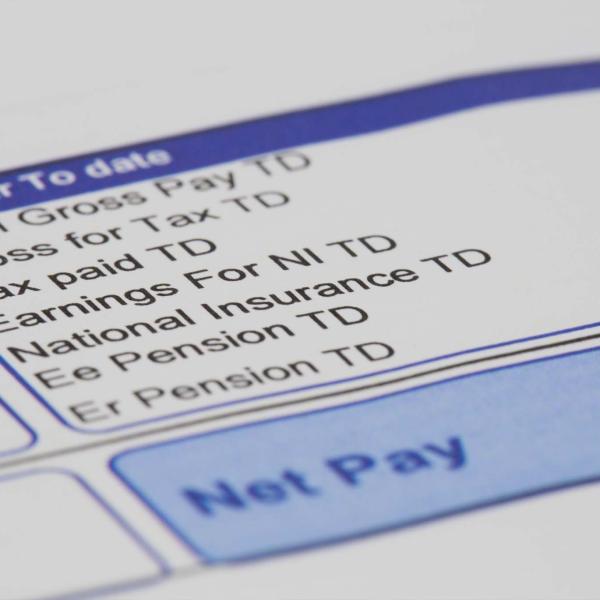Government borrowing is set to be over £50 billion next year (2.3% of national income), more than double what the OBR forecast in March. This results mainly from a combination of spending increases, a (welcome) change in the accounting treatment of student loans, a correction to corporation tax revenues and a weakening economy. Borrowing of this level would breach the 2% of national income ceiling imposed by the government’s own fiscal mandate, with which the chancellor has said he is complying.
Even a relatively benign no-deal Brexit would likely lead to borrowing approaching £100 billion, or 4% of national income. Under such a scenario, a temporary fiscal stimulus could help to smooth the path of growth. But it would also add to government debt, which would be on course to breach the government’s sustainable debt rule. Debt would climb to almost 90% of national income for the first time since the mid 1960s.
In those circumstances, next year’s mini-boom in public spending would likely be followed by another bust as the government struggled to deal with the consequences of a smaller economy and higher debt for funding public services.
The government is in practice operating with no effective fiscal rules at present. It has –probably rightly – abandoned its manifesto commitment to get to budget balance in the mid 2020s. Given the massive uncertainty over the direction of the economy and public finances, it is hard to conceive of a set of fiscal rules in the short term that would be appropriately constraining and give the chancellor flexibility to respond to bad economic news. A commitment not to legislate further permanent net tax cuts or day-to-day spending increases might for now be the best way to manage that uncertainty as the Treasury prepares for this year’s Budget and next year’s Spending Review. This is not the time to be implementing substantial and permanent net tax cuts.
These are among the headline findings of the 2019 IFS Green Budget, funded by the Nuffield Foundation and in association with Citi, with additional analysis from the Institute for Government. It also finds:
On public spending
- Day-to-day spending on public services is due to rise by 4.4% between this year and next – the biggest year-on-year rise since 2009–10. This will at least pause, but certainly will not undo across the board, the cuts seen over the current decade. Day-to-day spending on public services outside of the Department of Health and Social Care (DHSC) next year will in real terms still be 16% below 2010–11 levels.
- Even so, total public spending will be at the same level, as a share of national income, as it was in 2006–07. But the shape of the state has changed, with less spending on public services outside of health, and more on health, pensions and overseas aid. Day-to-day spending by DHSC will account for 42% of total day-to-day spending on public services by central government next year, up from 33% in 2010–11 and 26% in 1999–2000.
- This illustrates a longer-term challenge not being addressed by either the government or the opposition. Ageing and other pressures on health, pensions and social care spending, if accommodated, must at some point mean higher taxes or continued cuts to other areas of public spending – the only question is how well in advance we choose to plan and act.
- The latest plans are for day-to-day spending on public services next year to be close to the levels implied by Labour’s 2017 manifesto (and be far above that implied by the last Conservative manifesto). Decisions announced by the Conservatives since 2017 mean that spending on the NHS will be far higher than Labour promised back then, and spending on police somewhat higher. The Conservatives have also broadly matched Labour’s promise on schools funding. Labour’s stated priorities were instead to get rid of university tuition fees and expand free provision of childcare, and the government is yet to mimic those policies. Labour also proposed a big boost to investment spending.
On the economy, analysis from Citi suggests:
- Growth in the UK has been weaker than in other G7 economies since 2016 and annualised growth has averaged just 1.3% over the past four quarters.
- National income is already between 2.5% and 3% (£55–£66 billion) lower than it would have been without the EU referendum result. The UK has missed out almost entirely on a bout of global growth since 2016.
- Uncertainty around Brexit has been hugely damaging to private sector investment, which may now be as much as 15–20% lower than otherwise. We have seen the most sustained fall in business investment outside of a recession; UK business investment growth is now the lowest in the G7.
- A continued delay to Brexit would mean continued uncertainty and very poor growth of only around 1% a year, even with a further modest fiscal loosening.
- Securing a Brexit deal would see somewhat higher growth, but it would still be weak at perhaps 1.5% a year.
- A no-deal Brexit, even with a substantial monetary and fiscal response, would likely mean two years of zero growth and a return to just 1.1% growth in 2022. It would leave the economy at least 2.5% smaller even than in a base case of continued delay and uncertainty.
- Remaining in the EU would be best for growth. If accompanied, though, by full implementation of Labour’s policies on tax, nationalisation, share ownership and labour market regulation, it is impossible to say whether the net effect would be better or worse than leaving the EU with a more growth-friendly set of policies.
In a separate chapter, the Institute for Government argues that:
- Theresa May failed to deliver on many of her early promises on domestic social and economic policy. Her progress was thwarted by Brexit – which consumed civil servants’ and ministers’ time and challenged party and Cabinet discipline – the lack of a parliamentary majority after 2017 and rapid turnover of ministers, which deprived some policy areas of the continuity and drive needed to make progress.
- Boris Johnson’s even weaker parliamentary position has so far left him hamstrung. A general election could break the current parliamentary deadlock. But Brexit will continue to occupy civil servants’ and ministers’ time: negotiating a future trade relationship with the EU once the UK has left the bloc – with or without a deal – would be more difficult than negotiating the Withdrawal Agreement over the past three years. If the government wants to make progress on other areas of policy, it should focus on a limited number of clear priorities, avoid frequent ministerial reshuffles, set clear fiscal objectives, be clear about how spending or other approaches can help deliver its objectives and make space for longer-term thinking.
Paul Johnson, IFS Director and an editor of the Green Budget, said:
"Things have changed remarkably quickly in public finance land. Not only is every spending department about to see a budget increase, we have a Conservative government set to increase day-to-day spending on public services to a level far closer to what Labour promised in its 2017 manifesto than to what was implied by the Conservative manifesto. And just since March, we have moved from a position where there looked to be plenty of headroom against next year’s borrowing target to one where that target is now on course to be missed.
"The government is now adrift without any effective fiscal anchor. Given the extraordinary level of uncertainty and risks facing the economy and public finances, it should not be looking to offer further permanent overall tax giveaways in any forthcoming Budget. In the case of a no-deal Brexit, though, it should be implementing carefully targeted and temporary tax cuts and spending increases where it can effectively support the economy. It will be crucial that these programmes are temporary: an economy that turns out smaller than expected can, in the long run, support less public spending than expected, not more."
Christian Schulz, Chief UK Economist at Citi, said:
"The UK economy is already around £60 billion smaller than it would have been without a vote to leave the European Union, with the UK missing out on a bout of global growth. Business investment is up to 20% lower than it would otherwise have been, hurting productivity and wage growth. Brexit no longer “just” determines future relations with the UK’s biggest trading partner and the transition towards them; it is also intertwined with the political outlook and thus broader economic policies.
"Continued delay would mean more uncertainty, further denting business investment and leaving growth around just 1% a year, even with a further modest fiscal loosening. From a growth perspective, a Brexit deal is a little better, leaving growth at 1.5%, but it would leave no chance of Brexit being cancelled. A no-deal Brexit – even with a substantial stimulus – could mean no growth at all for the next two years. Remaining in the EU would be the best scenario for economic growth in the next few years."
Gemma Tetlow, Chief Economist at the Institute for Government and one of the authors of the IfG chapter, said:
"A general election might break the deadlock in parliament, but Brexit will continue to consume civil servants’ and ministers’ time. To make progress on domestic policy in this environment, the government should set clear and limited priorities, avoid frequent ministerial reshuffles, make space for longer-term thinking and be clear about how extra spending or other policies can help deliver its objectives."
Tim Gardam, CEO of the Nuffield Foundation, said:
"The Green Budget shows the remarkable pace of change in the public finances and demonstrates how vital it is that we have independent scrutiny of government, particularly at a time of such great uncertainty. People should have access to independent and accessible information they can trust about decisions that will directly affect their day-to-day lives, and that is what the IFS provides."
Two chapters of the Green Budget were pre-released:
Options for cutting direct personal taxes and supporting low earners https://www.ifs.org.uk/publications/14387
Meeting the prime minister’s ambition to raise the higher-rate threshold for income tax to £80,000 a year would cost £8 billion a year even if implemented gradually over the period of a parliament. Mr Johnson also wants to see the threshold of National Insurance contributions increased. This is also expensive – costing £3–5 billion a year per £1,000 increase. While better targeted at low earners than any income tax cut, if the main desire is to help low earners then increasing the generosity of work allowances in universal credit would be more effective.
A road map for motoring taxation https://www.ifs.org.uk/publications/14407
Fuel duties now raise £19 billion a year less than they would have done had they stayed at the same fraction of national income as they were in 2000. They are likely to be on a path down to zero over the coming decades as we move to cars that do not run on fossil fuels. The government needs to act to change the taxation of motoring both to protect revenues and to capture the social costs of driving, of which congestion is by far the largest. A good start would be to move towards a tax per mile driven, perhaps as a first step towards a more comprehensive system of road pricing.










